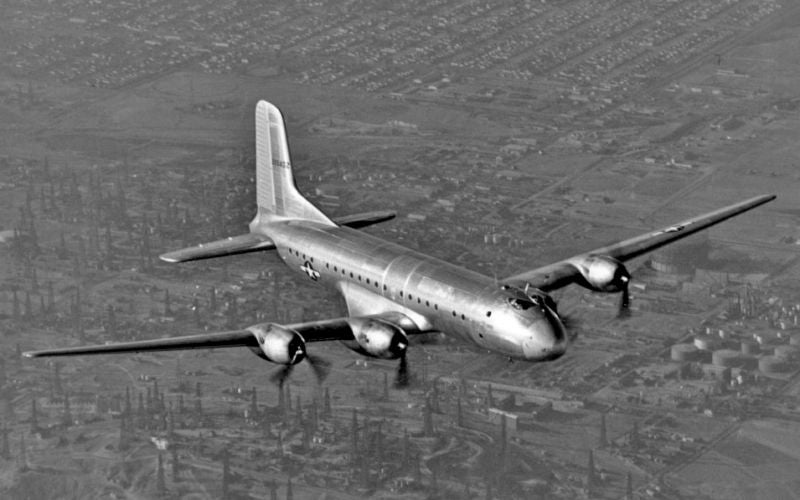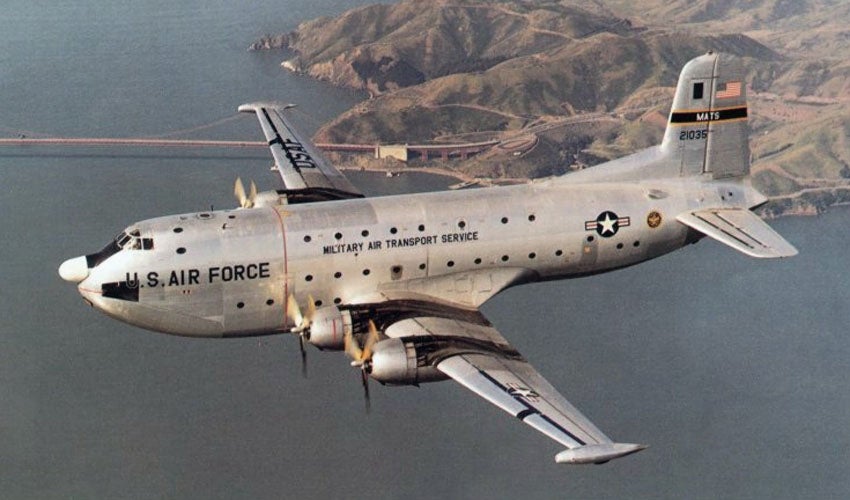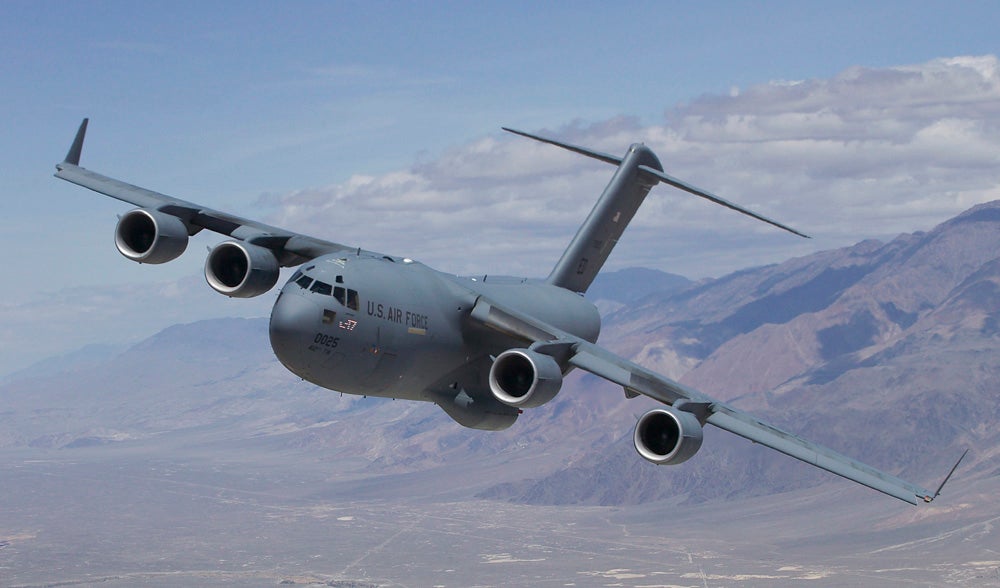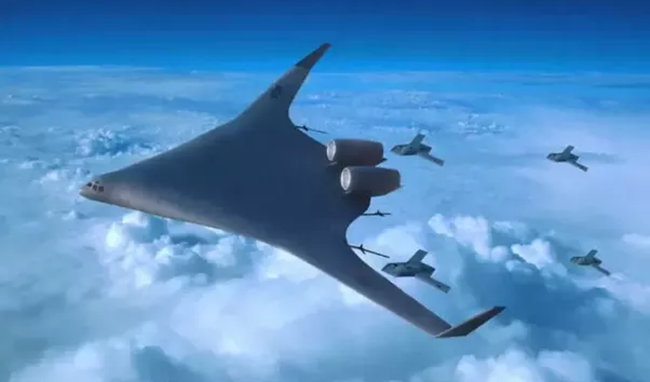 by "ttyymmnn" (ttyymmnn)
by "ttyymmnn" (ttyymmnn)
Published 11/15/2017 at 12:35
 by "ttyymmnn" (ttyymmnn)
by "ttyymmnn" (ttyymmnn)
Published 11/15/2017 at 12:35
Tags: wingspan
; Planelopnik
STARS: 11
By definition, a world war is one in which many different belligerent nations fight each other over large swaths of the Earth and, so far at least, there have been only two. The first was fought mainly in Europe and the Levant, while the second was a truly global struggle, stretching across Europe in the west and the Pacific Ocean in the Far East. Napoleon Bonaparte, or perhaps Frederick the Great, famously said that an army travels on its stomach, and, for the United States to supply armies on opposite sides of the world, they needed an aircraft with truly global reach. So it only seems fitting that the first such logistical aircraft would be called the Globemaster, and it is a name that has christened three aircraft since WWII.

War broke out in Europe on September 1, 1939, but it would be two years before the United States was drawn into the conflict. The Japanese attack on Pearl Harbor on December 7, 1941 served as a wake up call to the US, and the US Army Air Corps needed a large cargo aircraft that could cover the vast distances of the Pacific Ocean while carrying a useful load of equipment, soldiers, and supplies. The Douglas Aircraft Company immediately began work on a cargo plane that could haul everything from soldiers to tanks to howitzers to bulldozers, and the first C-74 Globemaster was ordered into production without prototypes, though it didnít take its maiden flight until September 5, 1945, after the end of WWII. At the time, it was the largest landplane to enter production, but, with the end of the war, the Army Air Forces cut production to just 14 aircraft. Of a traditional design, the C-74 had an unpressurized cabin and was powered by four Pratt & Whitney R-4360 Wasp Major engines. One unique feature, though, was the use of two separate bubble canopies for the pilot and co-pilot, though a traditional cockpit was later installed. A single Globemaster took part in the Berlin Airlift , where it flew 24 missions and hauled 1.2 million pounds of supplies while also setting numerous airlift records. The C-74 also supported the Korean War, but was retired in 1952. By that time, the Air Force needed something bigger, and Douglas already had a successor in the pipeline.

Work on a successor had already begun in 1947, and the C-124 Globemaster II used the C-74 as a template. Lessons learned during the Berlin Airlift required a novel approach to the problems of loading and unloading cargo, and the C-124 featured two clamshell doors in the front and a hydraulically operated lift ramp and a cargo elevator in the fuselage. the C-124 also featured two decks, with the lower deck fitted for up to 68,500 pounds of cargo up to 200 troops when both decks were fitted for passengers. The wing and engines came directly from the C-74, and it had a range of nearly 7,000 miles. The Globemaster II served the Military Air Transport Service (MATS) during the Korean War and the Vietnam War and carried out missions the world over and even to Antarctica. In service with the Strategic Air Command, C-124s carried ballistic missiles to Europe. A total of 448 of all variants are produced from 1949-1955 before it was supplanted by the turboprop-powered Douglas C-133 Cargomaster and jet-powered Lockheed C-141 Starlifter .

The C-141 and Lockheed C-5 Galaxy carried out the bulk of the strategic and tactical airlift missions throughout the Vietnam War and into the 1980s, but by the 1970s, the Air Force began to seek a replacement for the Starlifter and a complement to the Galaxy. Based on lessons learned during the Vietnam War, the Air Force knew they needed a cargo jet that could haul more goods farther but also land on shorter, rougher runways. In response to an Air Force request, McDonnell Douglas produced the YC-15 , but budget wrangling led to the cancelation of the project, along with Boeingís entrant, the YC-14 , and it wasnít resurrected until 1980 with the C-X program. McDonnell Douglas revisited their earlier airlifter to develop the C-17 Globemaster III , which entered service in 1995 and is powered by four Pratt & Whitney F117 turbofan engines which give it a cruising speed of 515 mph and a range of up to 5,600 miles. It can carry up to 170,900 pounds of cargo, as many as 134 troops or one M1 Abrams main battle tank. Thrust reversers that direct the jet exhaust upward reduce the dangers of ingesting foreign objects into the engines and give the C-17 a stopping distance of as little as 3,500 feet. During testing, a C-17 set 33 world records, including a record for STOL capability in which a C-17 took off in less than 1,400 ft, carried a payload of 44,000 pounds to altitude, and then landed in less than 1,400 ft. In 1998, the C-17 was awarded the Collier Trophy for achievement in aeronautics.

Will there be a Globemaster IV? Thatís difficult to say. Boeing, who merged with McDonnell Douglas in 1997, halted production of the C-17 in 2015 after the production of 279 aircraft. The Air Force expects the Globemaster III to serve until at least 2030, but that is now only 13 years away, and the development of any military aircraft is a long, arduous and expensive undertaking. Both Boeing and Lockheed are working on futuristic concepts that combine advanced aerodynamics and stealth features, but without any clear source of funding, or a long-term vision from the Air Force, the C-17 and C-5 will be flying for decades to come.
!!! UNKNOWN CONTENT TYPE !!!
!!! UNKNOWN CONTENT TYPE !!!
!!! UNKNOWN CONTENT TYPE !!!
!!! UNKNOWN CONTENT TYPE !!!
!!! UNKNOWN CONTENT TYPE !!!
!!! UNKNOWN CONTENT TYPE !!!
!!! UNKNOWN CONTENT TYPE !!!
If you enjoy these Aviation History posts, please let me know in the comments. And if you missed any of the past articles, you can find them all at
Planelopnik History
. You can also find more stories about aviation, aviators and airplane oddities at
Wingspan
.
!!! UNKNOWN CONTENT TYPE !!!
 "Bman76 (hates WS6 hoods, is on his phone and has 4 burners now)" (bman76-4)
"Bman76 (hates WS6 hoods, is on his phone and has 4 burners now)" (bman76-4)
11/15/2017 at 13:04, STARS: 3
I flew the full cockpit C-17 simulator at Boeing STL once, it was a neat experience.
They said that the actual plane can jump like 20+ feet almost instantaneously when airdropping heavy loads, and training pilots to expect that is quite a task.